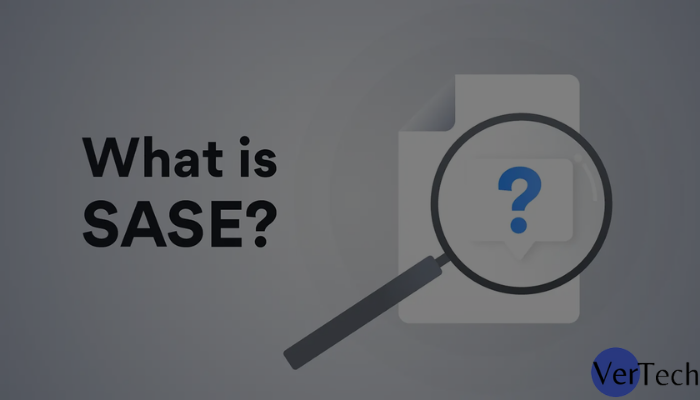Business
How To Defend Your Network With SASE

Securing the edge is critical due to the increasing number of endpoints. Organizations continue to fill the digital space, with many getting ‘sassy’ with network and security solutions.
A fast-rising number of organizations are now adopting cloud-native solutions with Secure Access Service Edge (SASE). With Zero Trust at the edge, access is granted based on user or device identity and the basis for requesting access to information, rather than depending on a specific location such as a data center or an IP address.
The Future of Network Security Is in the Cloud,” says Gartner analysts in 2019, while introducing the SASE concept with certain predictions about its versatility.
Gartner predicted that the birth of SASE will generate major access for risk, network, and security experts to facilitate the dynamic conditions of digital transformation access, creating secure access capabilities to cloud-based services and a wide array of users distributed across diverse locations.
Before the pandemic, CISOs, senior-level executives responsible for corporate cybersecurity, vigorously widened their scope of security mechanisms to secure the massive software, hardware, and data that moves around the web, desktop, and mobile to the IoT and IIoT.
But when the pandemic hit in a rude shock to everyone, organizations had to rely on remote work to continue running a business. But the unplanned and unprepared move also opened the door to a flood of cybersecurity issues, as there was no time to treat security in the proper business fashion.
What Is SASE?
Gartner gave a popular 2019 SASE definition, describing it as emerging cloud-native cybersecurity. It is a security framework that prescribes network connectivity and security conversions into a single cloud-delivered platform for edge computing, mobility of the workforce, and safe and speedy cloud adaptation
A Gartner prediction shows that 40% of companies will likely implement policies to embrace the SASE model by 2024. A recent one predicted an estimated $11billion of the SASE market value by 2024.
What Kind of Solution Does SASE Offer?
SASE introduces a solution to network performance challenges by harnessing SD-WAN integrated cloud security. With this, network traffic follows an unrestrained path to internet apps such as Web apps, Cloud, and SaaS.
More than 80% of organizations have network traffic that demands accessing the internet through specific applications for keeping the business running.
“Hub and spoke” designs or Legacy networks such as MPLS traditionally employ traffic to tunnel to data centers from the edge to provide network security demands before going online. However,
Legacy designs are ineffective due to the network’s long path in accessing internet applications. It also creates inaction and “bottleneck” network situation while accessing online data, hampers user experience, and decreases performance.
The Key SASE Components that Helps To Defend Your Network
The leading components of SASE include Software-Defined WAN (SD-WAN), Cloud Access Security Broker (CASB), NGFW and Firewall-as-a-Service (FWaaS), Secure Web Gateways, and Zero Trust Network Access.
- Software-Defined WAN (SD-WAN) serves as the basic foundation of a SASE framework. It enhances intelligence and performance operating in a client-to-cloud network architecture.
- Cloud Access Security Broker (CASB) provides items that can support in combating cybersecurity issues within the cloud environment of an organization. It makes locations central policies available across various cloud services for devices and users, controls, granular visibility, sensitive data, and user activities.
- NGFW And Firewall-as-a-Service help organizations erase the issues with legacy provisions based on appliances.
- Secure Web Gateway (SWG) secures devices and users against potential attacks and compliance with regulatory policy.
- Zero Trust Network Access (ZTNA) is a framework of technologies to provide access only to verified assets, devices and users. The dominant task within a SASE solution is to determine accessible apps to users. At the same time, advanced context and identification based on roles, with Multi-Factor Authentication (MFA), are critical to determining users’ access to resources.
How to Implement SASE to Defend Your Network
1. Define your framework goals and policies
The early step should involve planning the SASE goals, use cases, problems that must be solved, and the projected result of your enterprise.
2. Conduct an Assessment And Uncover the Problems
Do a comprehensive examination of your network resources and infrastructure to determine the limitations to achieving your network projections. Draw a realistic picture of where you are and the next level you hope to have attained with SASE in the future.
3. Decide Your SASE Vendors and Solutions
Some vendors offer SASE access through SD-WAN and similar technologies, while you’ll receive access with others through the security service edge network and cloud-delivered security features. You may also implement the SASE solution completely through SD-WAN combined with a security service edge solution.
4. Stage SASE Deployment and Test
Follow the provided SASE deployment configuration and test it. The steps you’ll follow are dependent on the provider, settings, and what is required.
5. Cutover, Troubleshoot, and Support
It is important to have a contingency plan as the most well-planned deployments can still go wrong. Hence, organizations should consider having support workers to handle issues where necessary.
Conclusion
Carry out SASE optimization repeatedly and monitor. After completing the SASE deployment process, monitor the process continuously and consider ways to improve how things work. Enforce a SASE strategy that addresses your organization’s unique requirements, environments, and goals.
-
Blog1 year ago
MyCSULB: Login to CSULB Student and Employee Portal – MyCSULB 2023
-
Android App3 years ago
Cqatest App What is It
-
Android1 year ago
What Is content://com.android.browser.home/ All About in 2023? Set Up content com android browser home
-
Software2 years ago
A Guide For Better Cybersecurity & Data Protection For Your Devices
-
Latest News2 years ago
Soap2day Similar Sites And Alternatives To Watch Free Movies
-
Android2 years ago
What is OMACP And How To Remove It? Easy Guide OMACP 2022
-
Android3 years ago
What is org.codeaurora.snapcam?
-
Business2 years ago
Know Your Business (KYB) Process – Critical Component For Partnerships





















